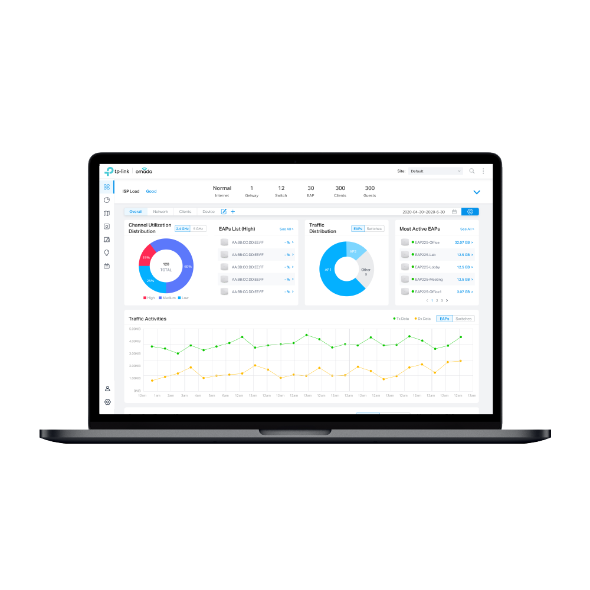What to do if you cannot find the page of Omada SDN Controller
This article will help you to visit the webpage of the Omada SDN Controller.
- Cloud Access
If you have enabled Cloud Access, you can visit Omada Cloud, after logging into the account, you will see all the controllers bound with your account. Launch the controller, then you will visit it via the cloud.

Please note that some features are not available via the cloud, such as Backup & Restore.
To visit the controller page via local access, please refer to the below suggestions. If you are using the software controller on your Windows PC or server, please go to Chapter 2; if you are using OC200 or OC300, please go to Chapter 3.
- Software Controller
- As long as you have run the controller, you will find the Omada icon appears in the taskbar. If there is an arrow, you may click it and check if there is the Omada icon, as shown below.
Click the Omada icon, then “Launch a Browser to Manage the Network”, the controller page will be opened automatically.

- If there is no Omada icon on the taskbar, it is most likely that the controller is not running, please double-click the icon on the Desktop or Start menu to launch it. Normally, the controller page will be opened once the initialization is finished.
- If you find “Initialization failed” like below, you may click X in the upper right corner to exit the controller; wait for 1 minute, then run it again.
- If “Initialization failed” error is still, you may open a browser, and input “localhost:8088” or “localhost:8043” to the address bar. If the controller page is not available with both of these two addresses, please restart Windows and try to run the controller again.

- Hardware Controller
Open the browser, input the IP address of your hardware controller, then you will be able to visit the controller page.
What if you don’t know the IP address of your OC200? Here are some suggestions.
- Omada APP. Install the Omada APP on your phone. Confirm that your phone has been connected with the Wi-Fi managed by the controller, launch the Omada APP, click + button on the screen shown below, then it will find the Controller and show the information.

- Omada Gateway. If your router is of the Omada Gateway series (ER605 or ER7206) and has been adopted by the controller, you can visit the router page with its IP address (192.168.0.1 in default), then you will find the IP address of the controller shown at the bottom of the page.

- Other Routers. If you are using other routers, you can visit the router page with its IP address (For TP-Link routers, the default IP address is 192.168.0.1), check the DHCP Client lists, and you will find the IP address of OC200.

Is this faq useful?
Your feedback helps improve this site.
TP-Link Community
Still need help? Search for answers, ask questions, and get help from TP-Link experts and other users around the world.










